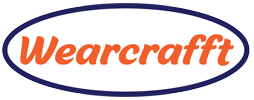In environments where safety and visibility are paramount—whether on a construction site, in a hospital corridor, or during community outreach—high-visibility (hi-vis) apparel plays a critical role. But not all hi-vis gear is created equal. Two of the most common options are the hi-vis vest and the hi-vis T-shirt. While they may seem interchangeable at first glance, each serves a distinct purpose depending on the setting, level of activity, and comfort requirements.
Let’s break down the differences between the two and explore which one might be the better fit for your team or workplace.
🦺 Hi-Visibility Vest: Lightweight, Layer-Friendly, and Versatile
The hi-vis vest is the classic go-to for many industries, especially construction, logistics, and healthcare facilities where staff need to be easily identified but also wear other uniforms underneath.
Key Features:
- Sleeveless design allows it to be worn over any clothing, including scrubs, jackets, or workwear.
- Adjustable fit with Velcro or zipper closures makes it easy to share across staff or wear over bulky layers.
- Highly reflective tape is often more prominent, covering larger surface areas for maximum visibility.
- Lightweight and breathable, making it ideal for short-term wear or environments with fluctuating temperatures.
Best Use Cases:
- Healthcare settings: Ideal for temporary roles like visitor escorts, cleaning staff, or mobile screening teams.
- Construction sites: Perfect for layering over thermal gear or rain jackets.
- Event staff or volunteers: Easy to distribute and collect at the end of a shift.
Pros:
- Cost-effective and easy to stock in bulk.
- Can be worn over any outfit without compromising visibility.
- Quick to put on and take off.
Cons:
- Offers no protection from weather or temperature.
- Can shift or bunch up during active movement.
- May not meet ANSI/CSA standards unless properly rated.
👕 Hi-Visibility T-Shirt: Comfortable, All-Day Wear with Built-In Safety
Hi-vis T-shirts are designed for workers who need to stay visible throughout the day while maintaining comfort and mobility. Unlike vests, these shirts are worn as primary garments and often come in moisture-wicking, breathable fabrics.
Key Features:
- Integrated reflective tape sewn directly into the shirt for durability and consistent placement.
- Bright fluorescent colors (lime, orange, red) that meet visibility standards even in daylight.
- Moisture-wicking materials like polyester blends that keep workers cool and dry.
- Available in long-sleeve versions for added sun protection or warmth.
Best Use Cases:
- Outdoor workers: Road crews, landscapers, or delivery drivers who need all-day visibility.
- Warehouse teams: Especially in high-traffic zones with forklifts or machinery.
- Healthcare outreach: Mobile clinics or community health teams working in public spaces.
Pros:
- Comfortable for extended wear.
- Doesn’t shift or interfere with movement.
- Often meets ANSI/CSA Class 2 or Class 3 standards.
Cons:
- Less flexible for layering—must be sized correctly.
- More expensive than vests.
- Requires laundering and replacement over time.
🆚 Vest vs. T-Shirt: Which Should You Choose?
The decision between a hi-vis vest and a hi-vis T-shirt depends on your environment, budget, and how long the gear needs to be worn.
| Feature | Hi-Vis Vest 🦺 | Hi-Vis T-Shirt 👕 |
|---|---|---|
| Layering | Excellent | Limited |
| Comfort | Moderate | High |
| Durability | Moderate | High |
| Cost | Low | Moderate to High |
| Standards Compliance | Varies (check rating) | Often Class 2 or 3 |
| Best For | Short-term or layered use | All-day wear and active roles |
Final Thoughts
If you’re outfitting a team for short-term visibility—like hospital visitors, outreach volunteers, or temporary staff—a hi-vis vest is a practical, budget-friendly choice. But for roles that require constant movement, outdoor exposure, or long shifts, investing in hi-vis T-shirts ensures comfort, compliance, and consistent visibility.
In healthcare environments, where dignity and professionalism matter as much as safety, choosing the right hi-vis gear can also impact how your team is perceived. A well-fitted hi-vis T-shirt may feel more integrated and respectful than a loose vest thrown over scrubs. On the other hand, vests offer flexibility for multi-role teams and quick deployment.
Ultimately, the best solution may be a mix—stocking both vests and T-shirts depending on the role, duration, and visibility needs. That way, your team stays safe, comfortable, and ready to serve with confidence.


